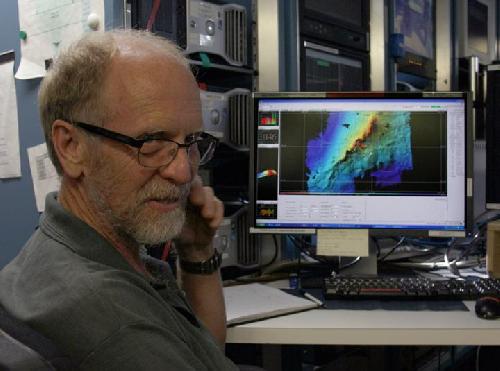Scientists drilling into the ocean floor have for the first time found out what happens when one tectonic plate first gets pushed under another.
The international expedition drilled into the Pacific ocean floor and found distinctive rocks formed when the Pacific tectonic plate changed direction and began to plunge under the Philippine Sea Plate about 50 million years ago.
"It's a bit like a rugby scrum, with two rows of forwards pushing on each other. Then one side goes down and the other side goes over the top," said study leader Professor Richard Arculus, from The Australian National University (ANU).

"But we never knew what started the scrum collapsing," said Professor Arculus, a petrologist in the ANU Research School of Earth Sciences.
The new knowledge will help scientists understand the huge earthquakes and volcanoes that form where the Earth's plates collide and one plate gets pushed under the other.
As part of the International Ocean Discovery Program, the team studied the sea floor in 4,700 metres of water in the Amami Sankaku Basin of the north-western Pacific Ocean, near the Izu-Bonin-Mariana Trench, which forms the deepest parts of the Earth's oceans.
Drilling 1,600 metres into the sea floor, the team recovered rock types from the extensive rifts and big volcanoes that were initiated as one plate bored under the other in a process known as subduction.
"We found rocks low in titanium, but high in scandium and vanadium, so the Earth's mantle overlying the subducting plate must have been around 1,300 degrees Celsius and perhaps 150 degrees hotter than we expected to find," Professor Arculus said.
The team found the tectonic scrum collapsed at the south end first and then the Pacific Plate rapidly collapsed 1,000 kilometres northwards in about one million years.
"It's quite complex. There's a scissoring motion going on. You'd need skycam to see the 3D nature of it," Professor Arculus said.
Professor Arculus said that the new knowledge could give insights into the formation of copper and gold deposits that are often formed where plates collide.
The research is published in Nature Geoscience.




Comments